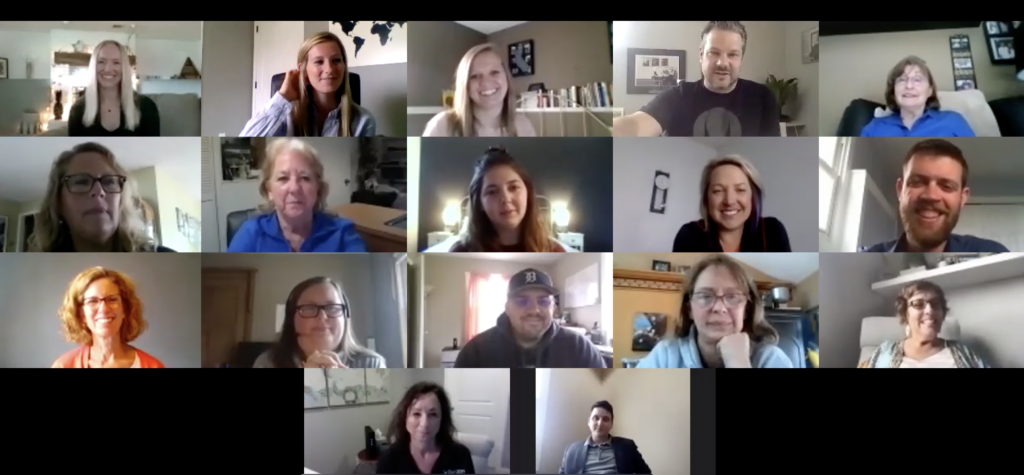Ryan Anderson comes with a certain set of communications skills. He brings with him years of experience living on video, which puts him ahead of the game compared to most of us who are new to spending hours per day on video calls.

Ryan works via video much of the time, and in 2013-14 he led the Herman Miller technology team that did an 18 month study with the User Experience team at Skype. They looked at the advantages, possibilities and challenges of spending hours at a time working via video. Ryan Anderson is the Vice President of Digital Innovation at Herman Miller and joined the Chamber to share video tips at one of our first “Network LIVE” events at the beginning of April.
There’s no doubt that video calls help us connect. They allow us to learn more about other callers by nature of seeing faces and non-verbals, thus creating a richer experience. However, video calls can also make people uncomfortable. It can feel like you’re looking at yourself in a mirror all day long, which can make you self-conscious, and can also open you up to the unpredictability of home life that can find its way into the video call.
Ryan's Top Five Video Tips
Here are some of Ryan’s practical suggestions for making the most of your video call experiences. They are not about aesthetics, but rather about feeling comfortable and being at your best.

Manage Unpredictability
Set your background the way that will have the least amount of distractions for the others on the call. If there’s a possibility of family members or pets wandering around behind you, consider positioning your camera in a way that you’ll have more control over what people can see behind you. For ultimate control, pivot your camera angle so you’ve got a nice safe wall behind you. You might be able to see activity going on in front of you, but others will not. They will only see how you react to the chaos.
Level Up
Take advantage of the multi-sensory advantage that video has over standard calls, texts and email, and maximize your non-verbals. Consider hand gestures, facial expressions, folded arms and eye contact all falling into the non-verbal category. The study showed that 70% of what video communicates comes from non-verbal cues, so set your set to make sure people are able to read your cues. Raising the level of your computer (with books or boxes or an adjustable desk) allows you to look straight into the camera and make great eye-contact with the other callers. This builds trust and confidence in what you are saying and eliminates those shots up your nose of catching an extra chin or two. Staying an arm’s length away from the camera gives other callers a view of your hand gestures as well, which adds to your content.
Find Your Light
Ideally, you’ll have lights next to you or in front of you without blinding you. Try to avoid a big window right behind you. You don’t want to be so backlit that you are totally darkened out. That’s only good if you’re in the witness protection program. Add extra lamps around you if you don’t have sufficient natural light to keep your face lit. Consider that your natural light will change over the course of the day.
Take Sound Seriously
If there are a lot of distractions in your home, consider investing in noise-cancelling headphones. These headphones provide you with a cone of silence for concentrating, and usually have higher quality microphones than earbuds. You can find both wireless and wired versions at a variety of price points.
Be Judicious
Be careful not to be overly reliant on video. It’s a great tool but isn’t needed for every communication. The nature of video is synchronous communications, which means everyone called to the meeting has to be engaged for that set amount of time. For people trying to balance home life and work life right now, constant attachment to their computer for calls can be overwhelming and leave them feeling trapped. It's not always necessary for everyone to be engaged in the conversation at the same time. Use asynchronous platforms such as email or Google docs, Slack, Basecamp or Microsoft Teams when it makes more sense, and let people answer when they have a quiet chance to respond thoughtfully.
